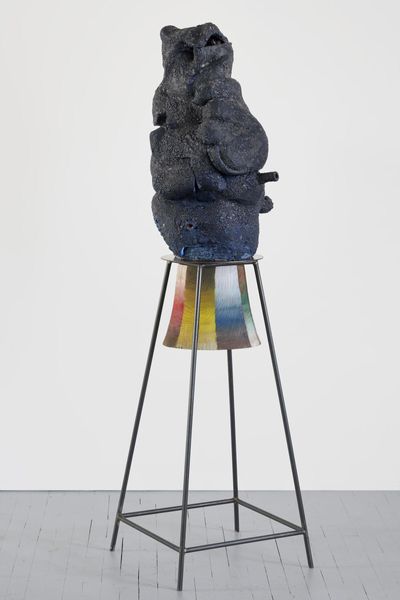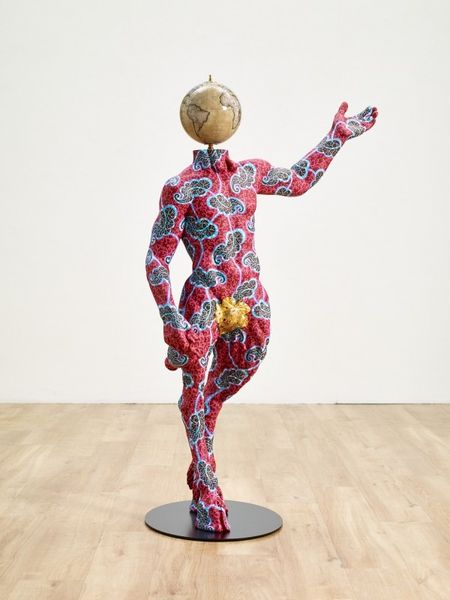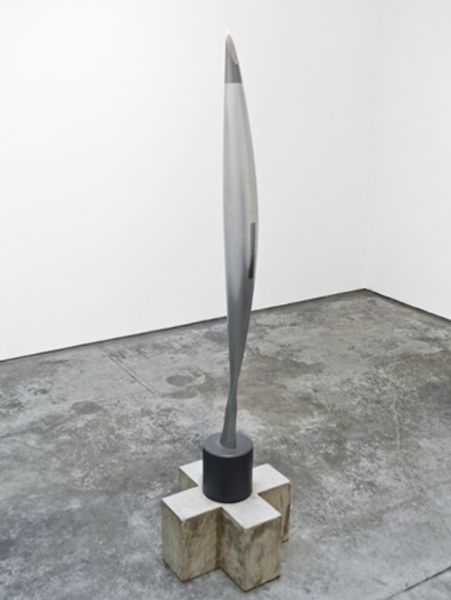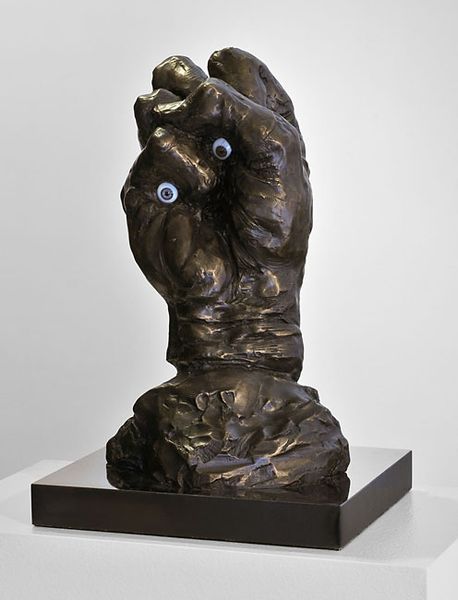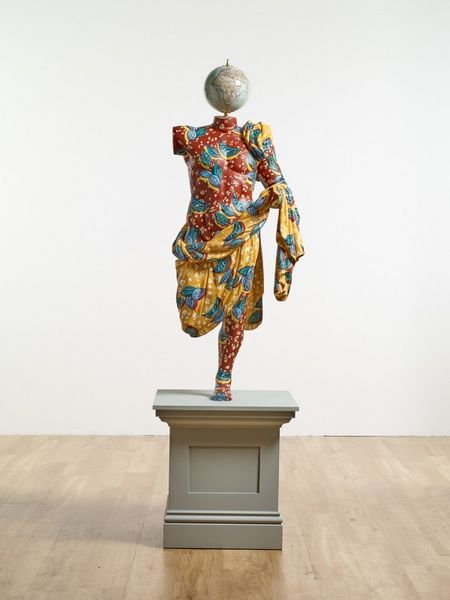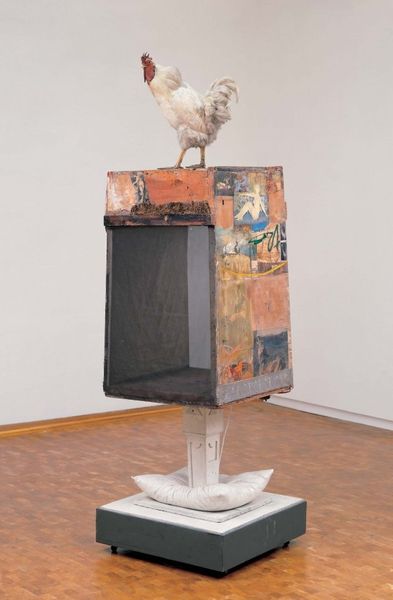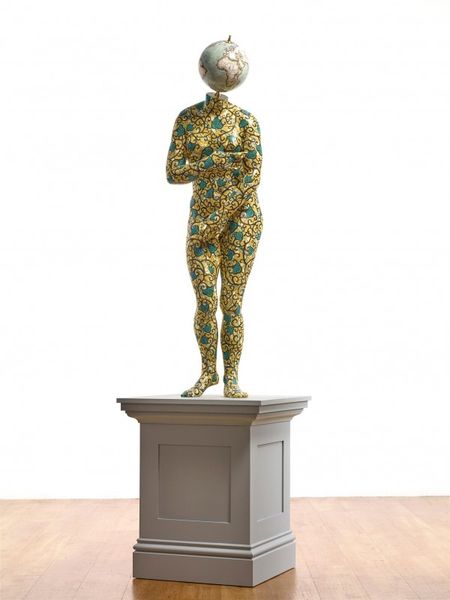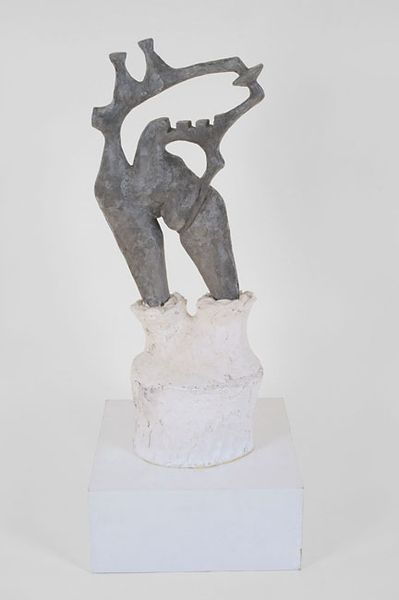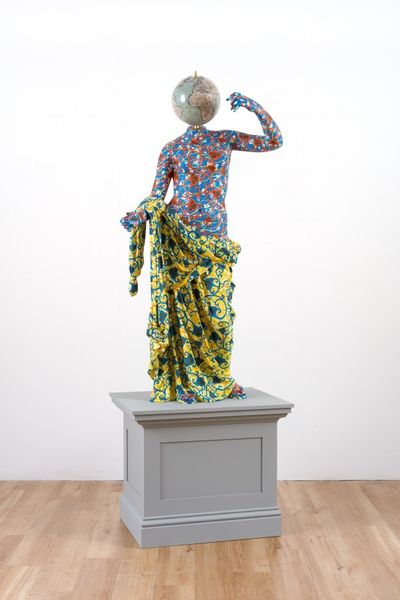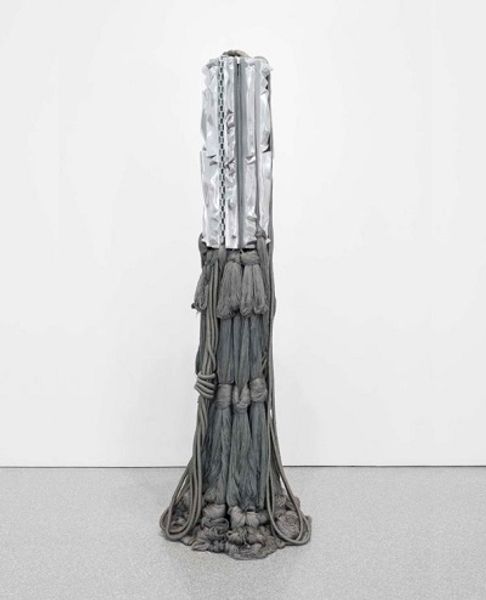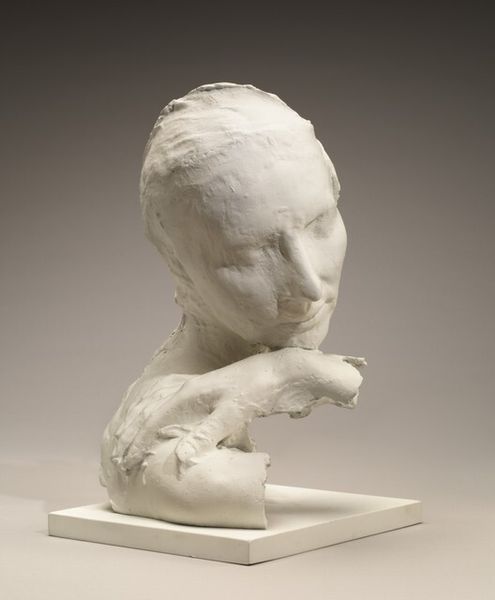
bronze, sculpture
#
contemporary
#
sculpture
#
bronze
#
figuration
#
sculpture
Dimensions: overall (sculpture and pedestal): 223 × 80 cm (87 13/16 × 31 1/2 in.) overall (sculpture): 123 × 67.5 cm (48 7/16 × 26 9/16 in.) pedestal: 100 × 80 cm (39 3/8 × 31 1/2 in.) gross weight: 113.399 kg (250 lb.)
Copyright: National Gallery of Art: CC0 1.0
Thomas Schütte made 'Man Without Face' from bronze, a material with so much history, so much weight to it. The way Schütte lets the bronze patinate, gives it that greenish hue, feels like he’s letting time do its thing. It’s like he’s saying, "Okay, nature, you take over." And this figure, without a face. It’s so direct. The surface isn't smooth, it's rough, like it's been through something. The way the light catches on those rough spots, it's like the sculpture is breathing. Look at the way the fabric of his clothes is suggested – those folds and creases, the weight of it all. The bronze almost seems soft, despite being so solid. Schütte, he's playing with ideas of monuments, but turning them on their head. The blankness of the face forces you to fill in the blanks, to think about who this person is, or could be. It’s a reminder that art isn’t about answers, but about asking the right questions. You might think about Giacometti, how he also elongated and distressed the human form, exploring similar themes of alienation.
Comments
No comments
Be the first to comment and join the conversation on the ultimate creative platform.
